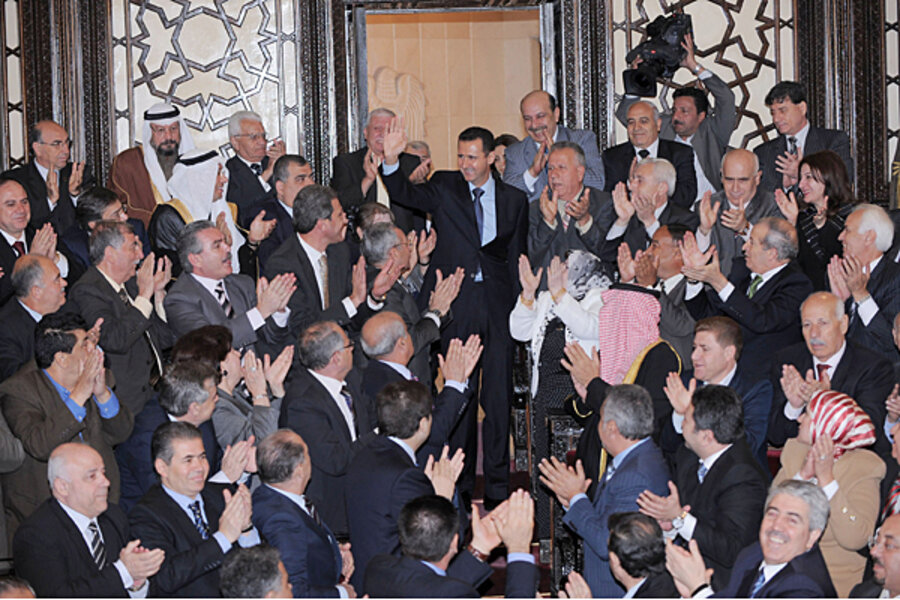Lifting the country’s state of emergency, in place since 1963, has been a key bargaining chip in the ongoing protests in Syria that have focused on demands for reform rather than the end of President Bashar al-Assad’s rule. The emergency law permits arrests without a warrant, gives almost unlimited power to the security apparatus, and allows for the suppression of opposition groups.
In an effort to placate the protesters, Mr. Assad has hinted more than once at lifting the law, but has yet to do so. On March 30, he announced the creation of a committee to consider the idea of lifting the law and said a decision would be made by April 25.
Assad’s father, Hafez al-Assad, declared the state of emergency. The two have justified its continuation for more than four decades on the grounds that Syria is perpetually in a state of war with Israel and has to battle the constant threat of terrorism within the country.





